
Destination
13:53, 25-Mar-2019
Scenery along the 'sky road': A trip aboard the Qinghai-Tibet train
Updated
13:54, 26-Mar-2019
By She Jingwei

For centuries, Tibet has not been explored as much by the outside world due to its remote location, extreme climate and geographic environment. Since the initial launch of the Qinghai-Tibet Railway in 2006, this railway has become the most popular and convenient way to connect Tibet to the rest of China, and has brought tremendous profits to the regions.
Dubbed the "sky road" and noted as a man-made wonder in transportation, this 1,956-kilometer-long world-renowned railway begins in Xining and ends in Lhasa. The stunning scenery along the railway offers not only a feast for the eyes, but also a journey for the soul. Come join CGTN to enjoy the enchanting trip on the Qinghai-Tibet train!
Qinghai Lake: A paradise for birdwatchers and cyclists
Starting from Xining Station, it takes around one hour to appreciate the stunning view of Qinghai Lake. Dazzling like a crystal-clear gem, Qinghai Lake is the largest inland lake as well as saline lake in China. Surrounded by lofty mountains, the lake features two sub-lakes: a saline Gahai Lake and a freshwater Erhai Lake.
Be it the blue sky and water, the green grassland or mesmerizing landscapes – Qinghai Lake boasts great charms that are worth exploring.
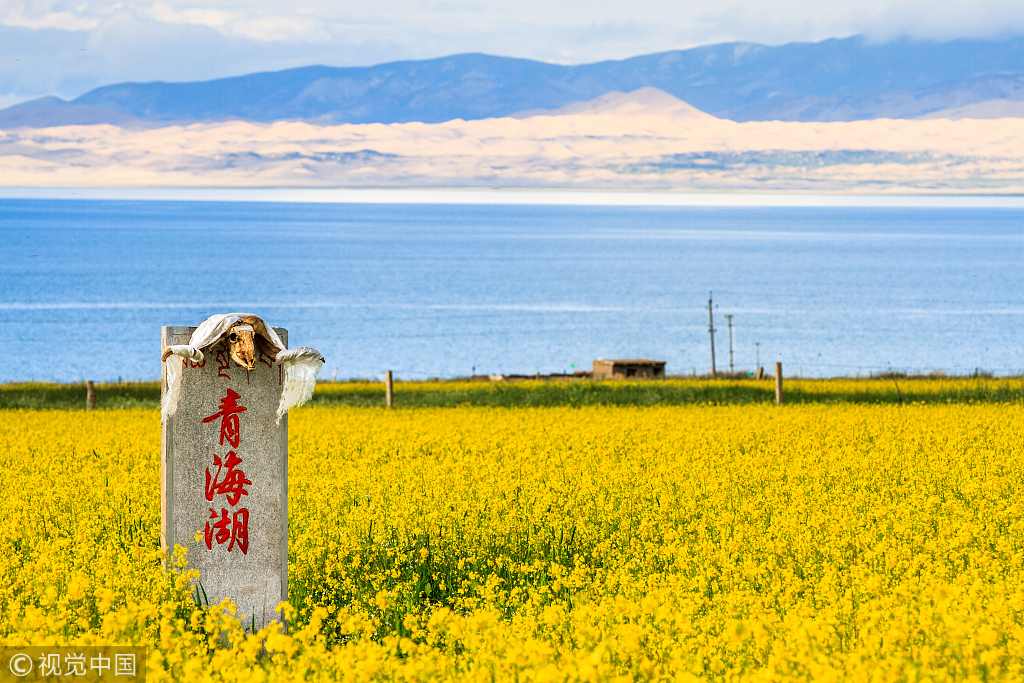
Cole flowers around the Qinghai Lake. /VCG Photo
Cole flowers around the Qinghai Lake. /VCG Photo
Qinghai Lake is definitely a paradise for bird lovers as many different kinds of birds would fly here to breed in May and June due to the mild weather. Meanwhile, for cyclists, cycling around the lake not only allows them to enjoy the beauty of the lake view, but also while away the time.
Tips:
The best time to visit the Qinghai Lake is from April to August as numerous Cole flowers blossom along the lake during that time, forming breathtaking scenery for visitors. In addition, May and June is the best season for bird lovers.
Kunlun Mountains: More than just mountains
As the train keeps moving up, a picturesque view of Kunlun Mountains appears before you. Reputed as the holy mountains, Kunlun Mountains extend west from the Pamirs with a length of 2,500 kilometers. The 6,178-meter Yuzhu Peak is the highest of the Kunlun Mountains in Qinghai. The high peaks of the mountains are covered with snow and mist all year round, creating a must-see view along the Qinghai-Tibet Railway.
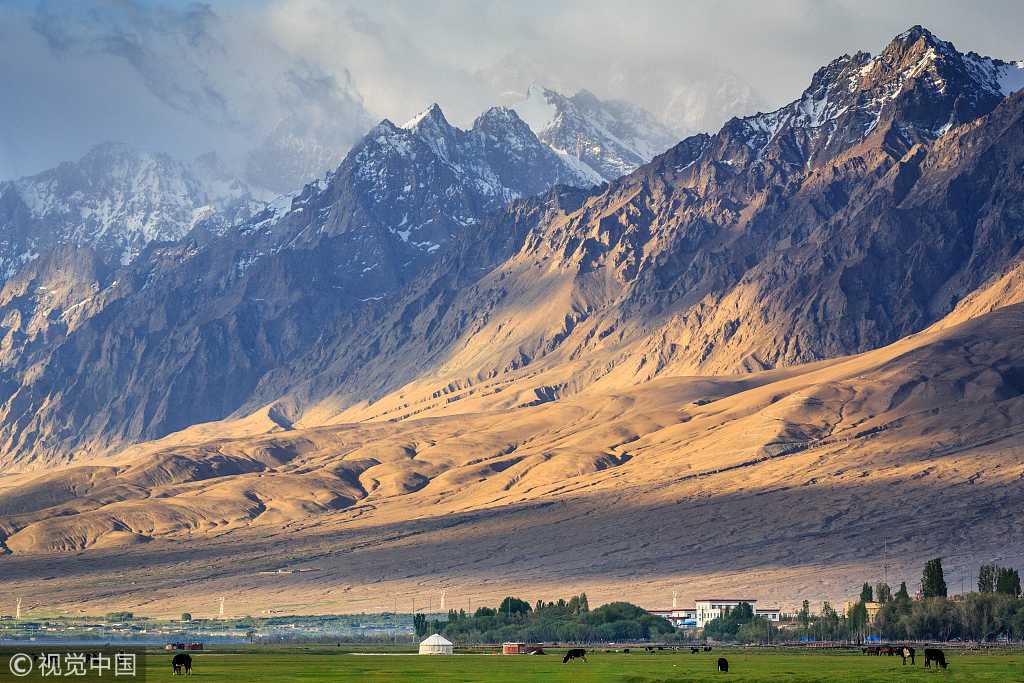
View of Kunlun Mountains. /VCG Photo
View of Kunlun Mountains. /VCG Photo
It's worth mentioning that the Yuzhu Peak is the first sightseeing station for passengers, which allows them to get off the train and take photos outside. For climbing beginners, this peak is considered to be the ideal destination as its route requires less technique.
Hoh Xil Nature Reserve: 'Forbidden zone for humans'
Hoh Xil, which means "green mountains" in Mongolian, is a plateau between the Kunlun and Tanggula mountain ranges, with an average altitude of 5,000 meters.
Home to many wild animals, including the Tibetan antelope and the wild yak, the Hoh Xil Nature Reserve is undoubtedly a desolate region in the northwestern part of the Qinghai-Tibet Plateau in China.
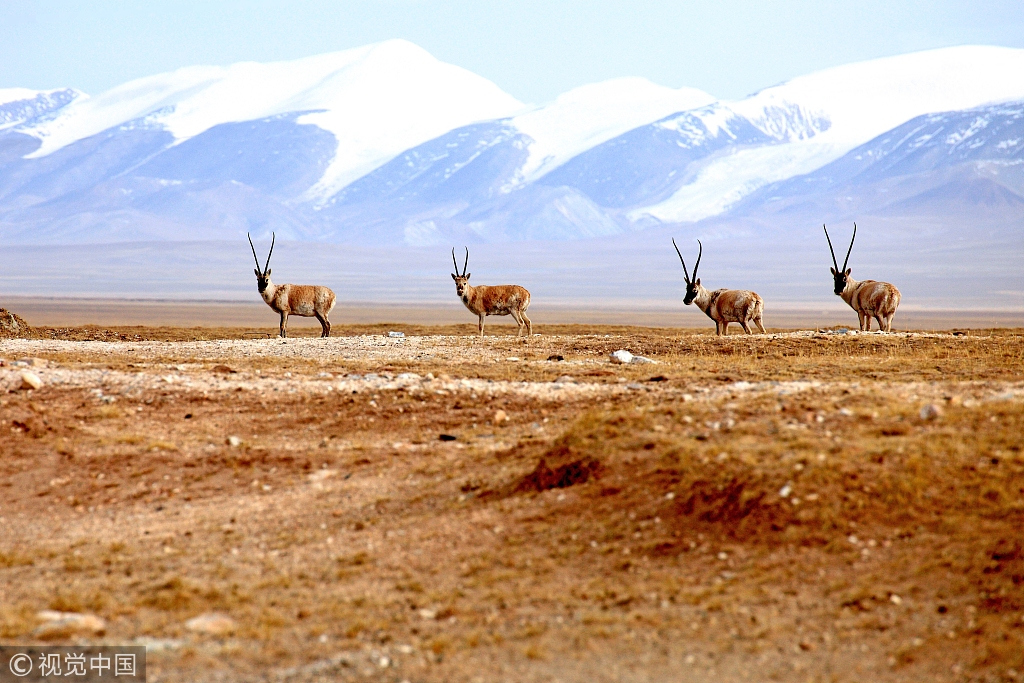
View of the Tibetan antelope in Hoh Xil Nature Reserve. /VCG Photo
View of the Tibetan antelope in Hoh Xil Nature Reserve. /VCG Photo
The extensive area of alpine mountains and steppe systems is situated more than 4,500 meters above sea level, where sub-zero average temperatures prevail all year round. The geographic and harsh climatic conditions have made this place become the "forbidden zone for humans," which is also a reason for its biodiversity. This is probably one of the few places left on Earth where one could get off the beaten track and find inner peace.
Tips:
As there are no signs in the Hoh Xil Nature Reserve, visitors often get lost here. Remember to bring a local herdsman with you or rent a car to travel.
Tsonag Lake: A 'soul lake' for Tibetans
Lying in Amdo County, Nagqu Prefecture in Tibet Autonomous Region, the Tsonag Lake is one of the most significant holy lakes to local residents.
The Qinghai-Tibet railway passes right by the lake, making it the closest altiplano lake to the railway on the road. Passengers can take photos and capture the charming view of the lake as they would definitely have something to brag about on social media.
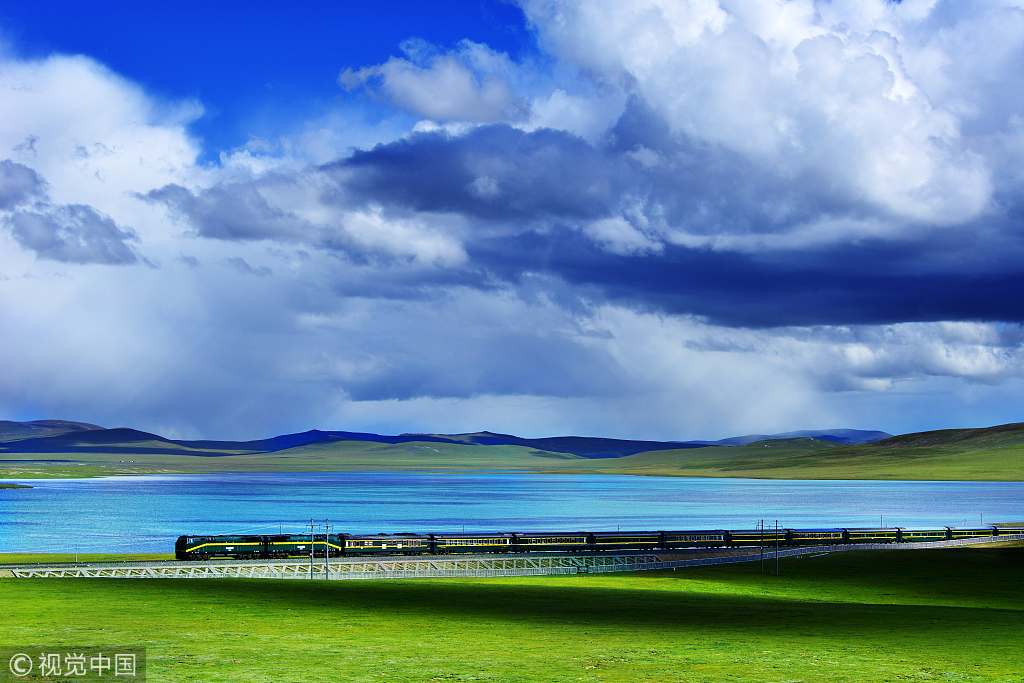
Aerial view of Tsonag Lake. /VCG Photo
Aerial view of Tsonag Lake. /VCG Photo
Lhasa: The start of the journey to Tibet
The final destination of the Qinghai-Tibet train trip — Lhasa, offers almost every aspect of Tibetan culture. If one must pick a name card for Lhasa, then Potala Palace is very likely to be the answer for that. No one can really say that he/she has visited Lhasa unless they have been to Potala Palace. To start a journey in Lhasa, the Potala Palace is a must-see destination for travelers from home and abroad.
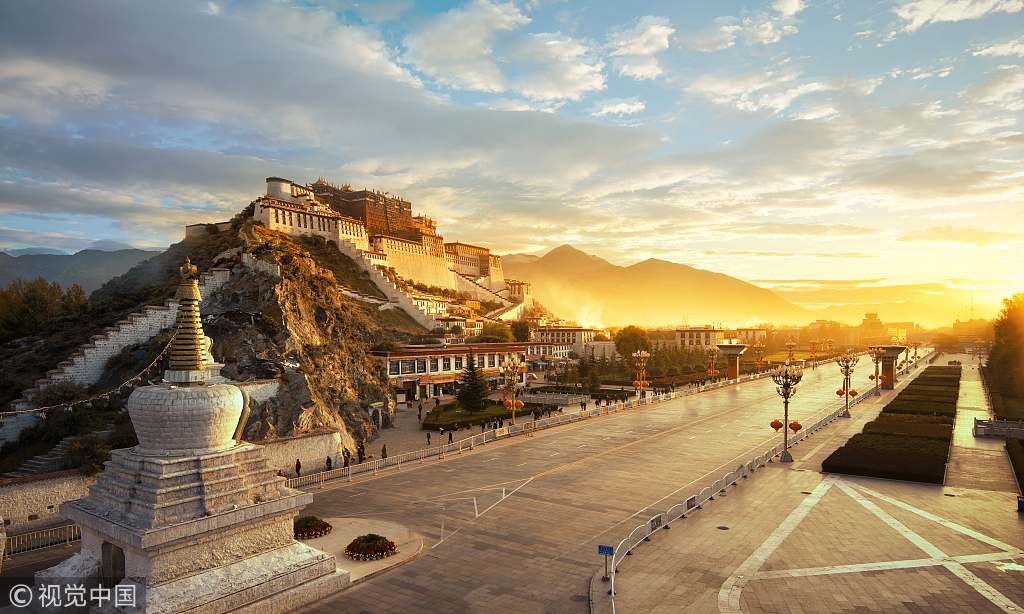
View of the Potala Palace at sunset. /VCG Photo
View of the Potala Palace at sunset. /VCG Photo
Sure, if you want to record all the scenery along the sky road, seeing them yourself is not enough. The feelings from the bottom of your heart are important! So, what are you still waiting for? It's time to pack your bag and start the soul journey to Tibet where you could completely hand over yourself to nature and soak up the unique Tibetan culture.

SITEMAP
Copyright © 2018 CGTN. Beijing ICP prepared NO.16065310-3
Copyright © 2018 CGTN. Beijing ICP prepared NO.16065310-3